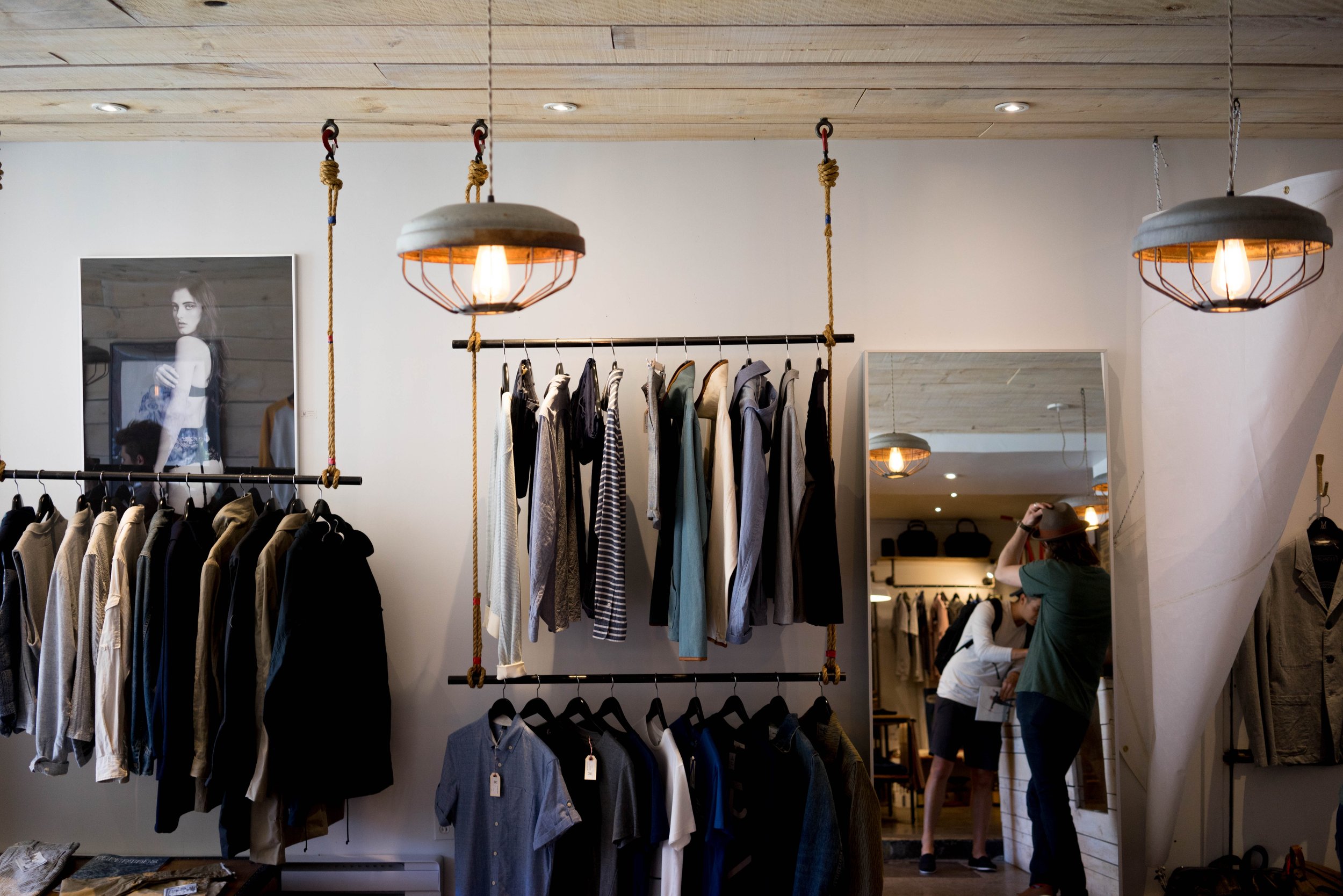Discover the current Trends in Boutique Fashion for Every Period
Discover the current Trends in Boutique Fashion for Every Period
Blog Article
Lasting Fashion: How Eco-Friendly Apparel Is Shaping the Future of Style
As the fashion sector encounters boosting analysis over its ecological influence, the increase of sustainable style supplies an encouraging choice that lines up style with ecological obligation. boutique fashion. Exactly how does this movement genuinely influence the future trajectory of fashion, and what challenges lie in advance in its widespread adoption?
Ingenious Lasting Materials
As the fashion sector grapples with its ecological effect, innovative sustainable materials have arised as a crucial remedy for reducing environmental footprints. These products not just reduce reliance on fossil gas but likewise decrease damaging chemical usage and water usage.
In enhancement to plant-based materials, improvements in biofabrication have brought about the growth of lab-grown fabrics. Mycelium natural leather, originated from mushroom origins, offers a versatile and biodegradable choice to animal leather. Its production results in considerably reduced carbon discharges and water usage, making it a more sustainable option for stylist looking for to line up with eco-friendly techniques.
Recycled materials are also gaining grip, with polyester made from recycled plastic containers representing a significant development. This advancement not only diverts plastic waste from seas and land fills however likewise reduces power consumption compared to producing virgin polyester. With each other, these materials underscore the potential for a more lasting fashion business, leading the way for eco mindful design and manufacturing.
Eco-Conscious Manufacturing
Structure on the technologies in sustainable products, the fashion market is additionally re-evaluating its production processes to better decrease ecological influence. Secret techniques consist of minimizing water usage, minimizing carbon emissions, and eliminating unsafe chemicals.
One more vital facet is the reduction of poisonous chemicals typically utilized in coloring and ending up textiles. Eco-conscious suppliers are moving in the direction of plant-based dyes and waterless dyeing modern technologies, which not only safeguard neighborhood communities however additionally boost employee security. Developments like digital printing minimize fabric waste and energy usage, providing a cleaner choice to typical methods.
Furthermore, openness and traceability have come to be extremely important. With the advancement of blockchain modern technology, firms can currently provide detailed insights right into their supply chains, making certain eco pleasant and honest practices at each step. This openness constructs customer depend on and motivates brands to preserve high sustainability standards. As the demand for eco-conscious products grows, manufacturers are compelled to introduce, making sure that the future of fashion is both fashionable and lasting.
The Rise of Upcycling
Upcycling, a transformative technique in sustainable style, includes artistically repurposing thrown out materials right into new, top quality items. This ingenious method not just minimizes waste but additionally lessens the need for resources, therefore minimizing the ecological effect of clothes manufacturing. By rebuilding and reimagining existing products, developers and fashion brands are able to instill originality right into their collections while promoting environmental obligation.

Moreover, the upcycling movement has empowered local business and independent designers, who typically lead in technology because of their agility and creativity. By profiting from the plentiful availability of unused products, these entities add to a circular economy, demonstrating that fashion can be both sustainable and fashionable. With upcycling, the sector takes substantial strides towards a much more conscious and see this responsible future.
Thrift Culture's Influence
The blossoming thrift society substantially reshapes the landscape of lasting fashion, stressing the significance of conscious intake. This cultural change motivates consumers to embrace pre-owned garments, thus lowering the demand for brand-new garment manufacturing and reducing ecological impact. Second hand shopping not just expands the lifecycle of garments yet likewise decreases the carbon footprint associated with production, transferring, and dealing with clothing.
A key element of second hand culture is its democratization of style. By offering a broad selection of designs from various ages at inexpensive costs, second hand shops make style obtainable to a wider target market. This access fosters a sense of uniqueness and imagination, as customers mix and match distinct pieces to curate personalized wardrobes without adding to the rapid fashion cycle.
Moreover, second hand culture promotes circularity in fashion, straightening with the principles of a round economic situation. As even more designers and customers accept thrift culture, the fashion industry is compelled to adapt, integrating sustainable practices to fulfill the expanding demand for eco-conscious options.

Future Trends in Fashion
Style's evolution is increasingly formed by technical technologies and sustainability-driven efforts. As customers come to be much more ecologically conscious, the industry is reacting with groundbreaking improvements that redefine the future of design. One noticeable trend is the rise of digital fashion, where digital garments can be put on in enhanced reality environments, considerably reducing textile waste. This change not only satisfies the digital-savvy customer yet likewise minimizes the environmental impact traditionally related to garment production.
Moreover, the combination of blockchain innovation offers brand-new opportunities in transparency and traceability, allowing consumers to verify the sustainability credentials of their clothing. boutique fashion. This ensures accountability in supply chains and advertises moral sourcing practices. discover this info here 3D printing is yet an additional development that assures to change making procedures by allowing on-demand manufacturing, therefore reducing excess stock and waste
As these technologies develop, they are poised to transform the style landscape, merging design with sustainability. The future of style, therefore, lies in a smooth blend of innovation, development, and ecological obligation.
Conclusion
The improvement of the style sector through sustainable techniques suggests a pivotal change towards ecological accountability. This development not only aligns fashion with eco-friendly sustainability however likewise establishes a criterion for future fads concentrated on obligation and advancement.
As the style industry deals with increasing scrutiny over its environmental impact, the increase of sustainable style supplies an appealing alternative that straightens style with ecological obligation.As the style market grapples with its ecological impact, cutting-edge sustainable products have actually arised as a critical solution for lowering ecological footprints. With each other, these materials underscore the capacity for a much more lasting fashion industry, paving the method for environmentally conscious style and production.
Building on the developments in sustainable materials, the style industry is also re-evaluating its production processes to even more lower environmental effect. boutique fashion.Upcycling, a transformative technique in lasting fashion, entails creatively repurposing thrown out products into brand-new, high-quality items
Report this page